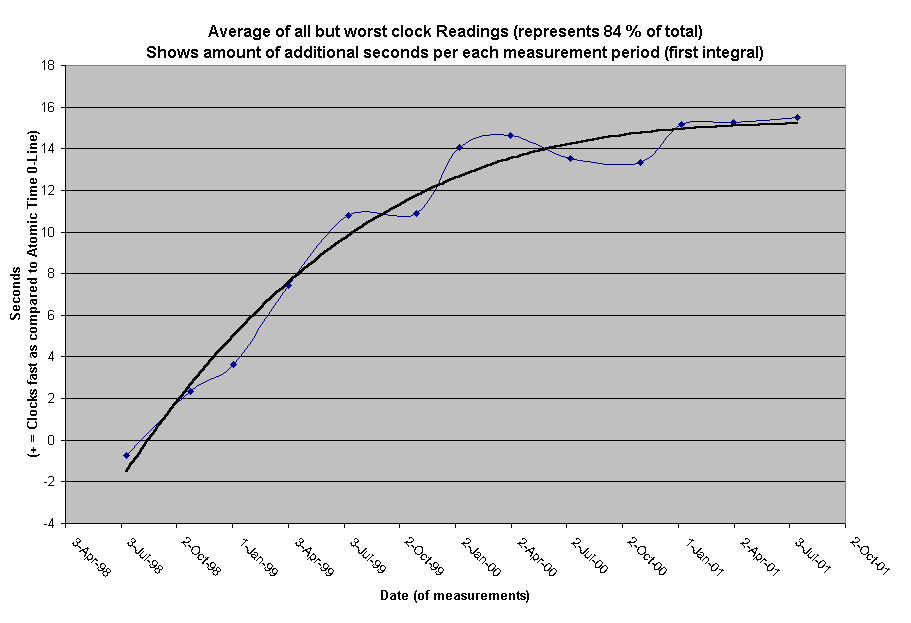
 Slowing Trends
Slowing Trends
- Comparison of our clocks to Atomic time results in an average of +40 sec/year for each the last 3 years (Jul 98 - Jul
01). This is added time making our clocks appear to run faster and faster each year.
- Reported "Full Moon" events have a trend direction reversal of from +10 sec/year (1950-1985) to -22 sec/year from
1985 to 2001. This is effectively an earth slowing indication of 10+22= +32 sec/year.
- Equinox trend data shows a change from about +1 sec/year (1950-1985) to +31 sec/year for the period from 1985 to
2001. According to the Zetas this indicates a slowing rotation of earth due to the indirect method of measurement used.
I didn't understand at the time what the Zetas were saying. The Zetas indicate the current methods used by the Navy (a
cheating method) are of measuring a star at night instead of trying to measure the angle to the sun in the daytime
(impossible to accurately do - too bright and undefined edges and often over the ocean on a boat) and then calculating
the actual Equinox crossing time. Because of this cheat-method the earth arrives late to the physical night-time
measuring place and thus the needed +31 sec/year to come out precise so no one notices any errors. Otherwise if the
exact time the sun crossed over the equator were measured the tables would have reported approximately -31
sec/year. The discrepancy in sign for this measurement is due to the way the event is actually measured as opposed to
the way the equinox is defined.
- Josh is measuring actual earth rotation time and will publish his results once something definite can be determined. He
has already indicated that the earth is rotating slower by .54 sec/day than his expensive accurate stopwatch. Assuming
this watch was in sync with Atomic Time within plus or minus .34 sec at the factory, then as he indicated he could
already be measuring a slowing trend.
Summary-Analysis: Paragraphs 1-3 above strongly indicate a slowing earth. Note that the 31 to 32 seconds for paragraph 2
and 3 is talkingabout a 12 to 16 year time frame. Paragraph 1 with 40 sec over the last 3 years is talking about much closer to
present time and would be expect to be bigger. If one uses 14 years times 31 sec we get about 434 seconds of estimated
added time during this period. Assuming the documented leap seconds of .64/year (9 sec for 14 years) is subtracted this gives
about 425 sec estimated current undocumented out of sinkness with the theoretical "stable Atomic Time standard" as it is
defined.
How much other data can we find? Any indication of clock type problems with our satellites? Is our satellites loosing altitude
to stay in sync with a slower earth? Has there be more need lately for user dish realign? Any clock manufactures noticed the
slow down? What could 425 seconds (7.08 minutes) cause that someone could notice over the last 14 years? Any one wish
to us there search capabilities?
Offered by Mike.




![]()
